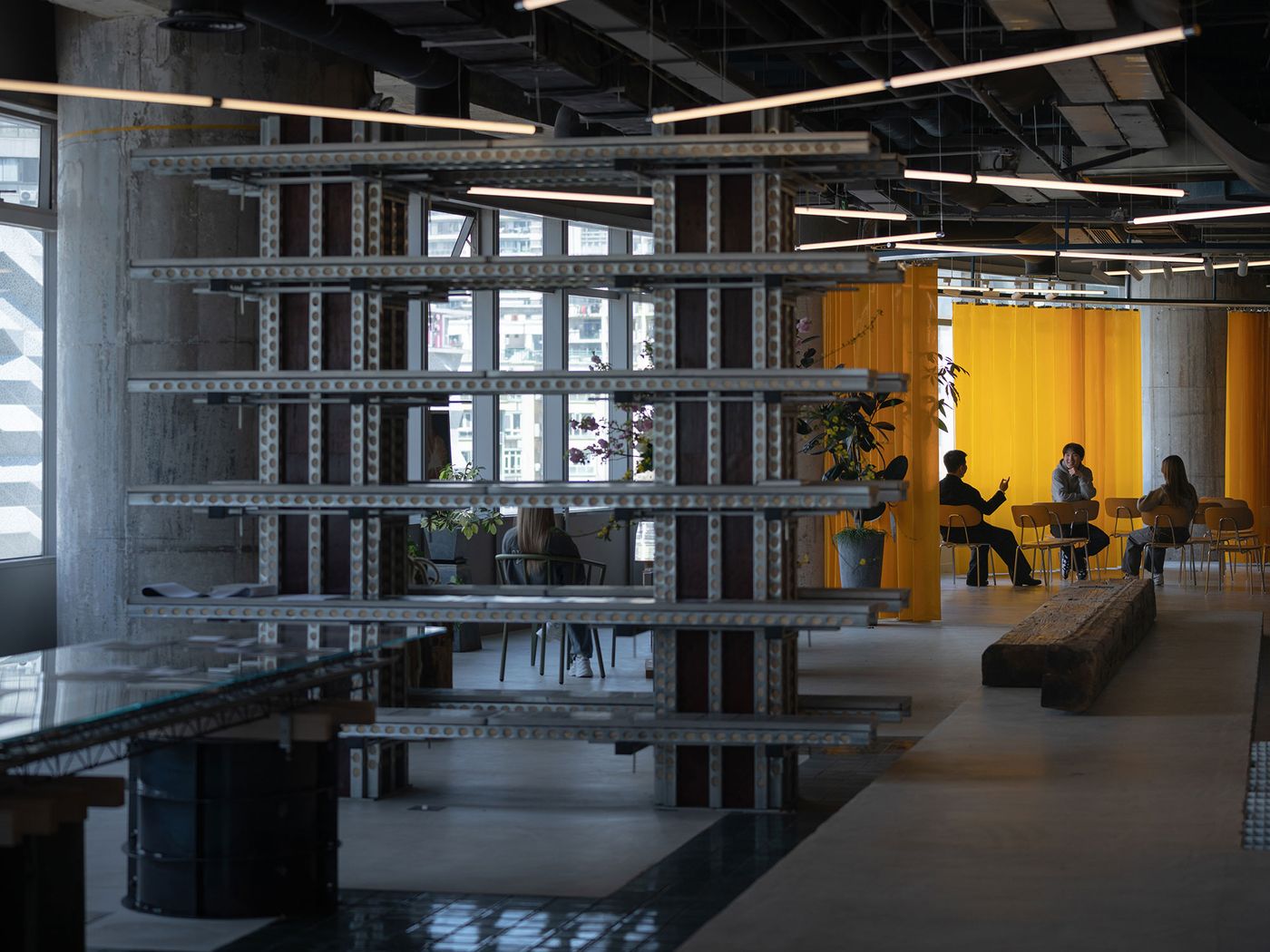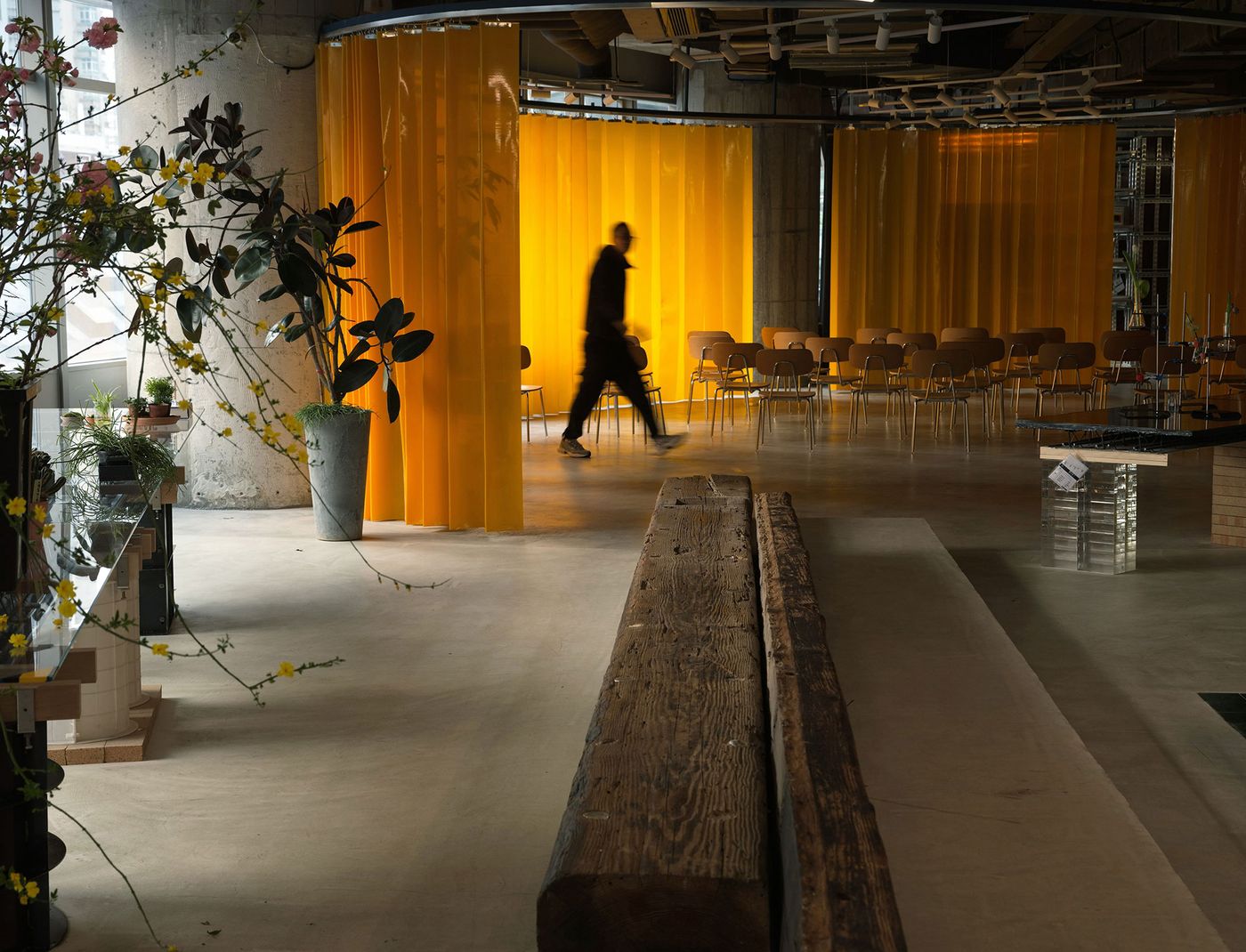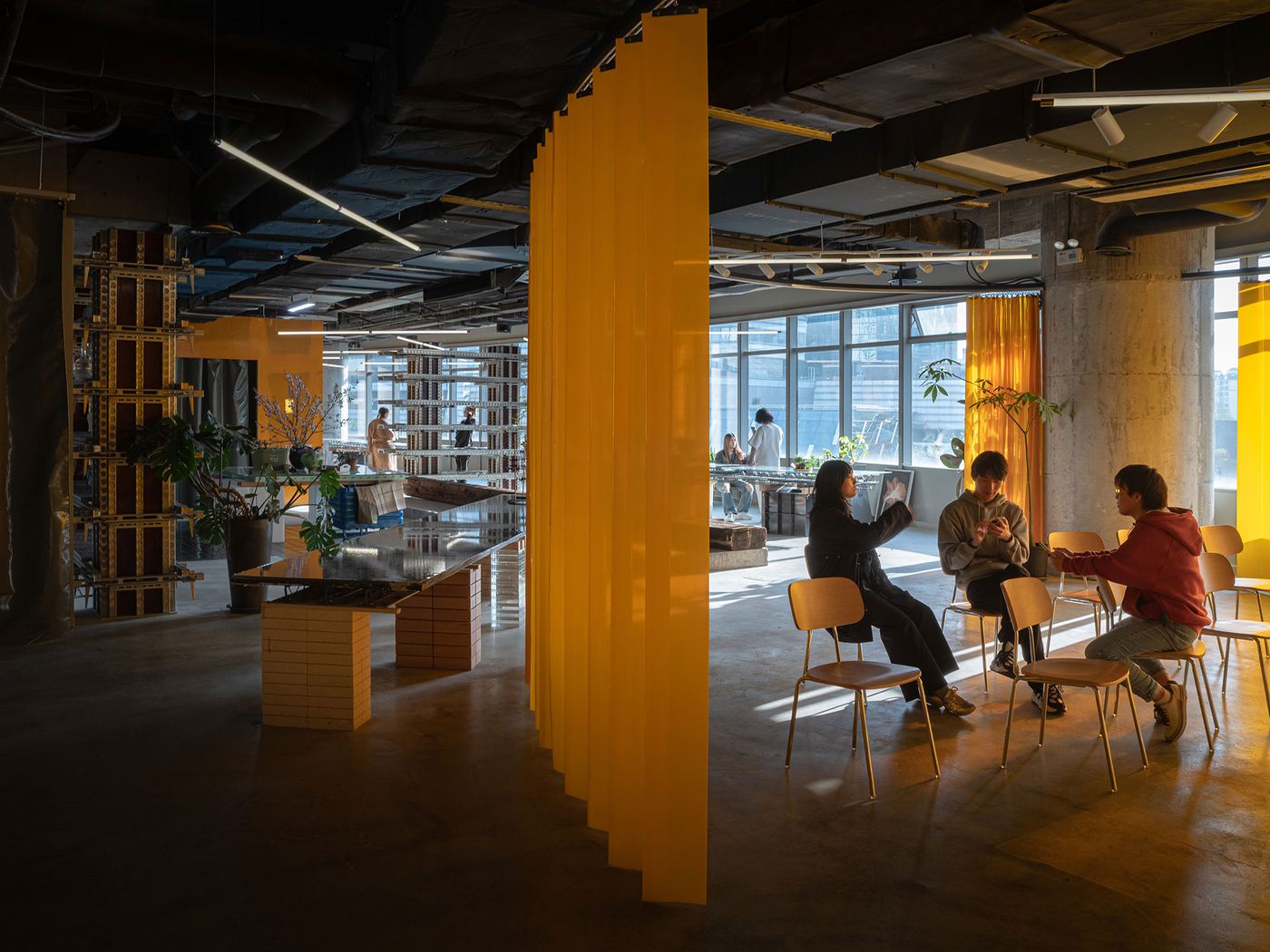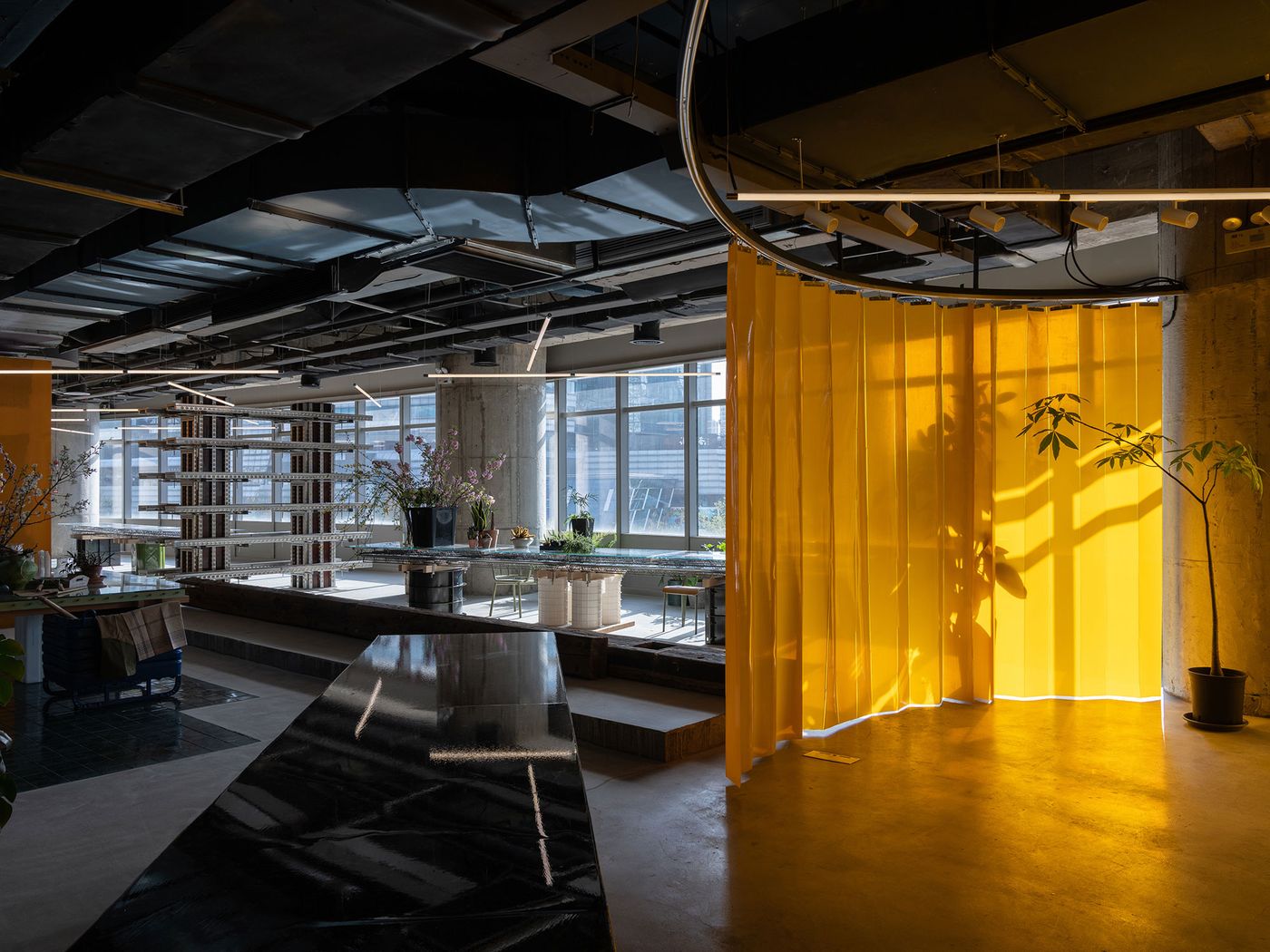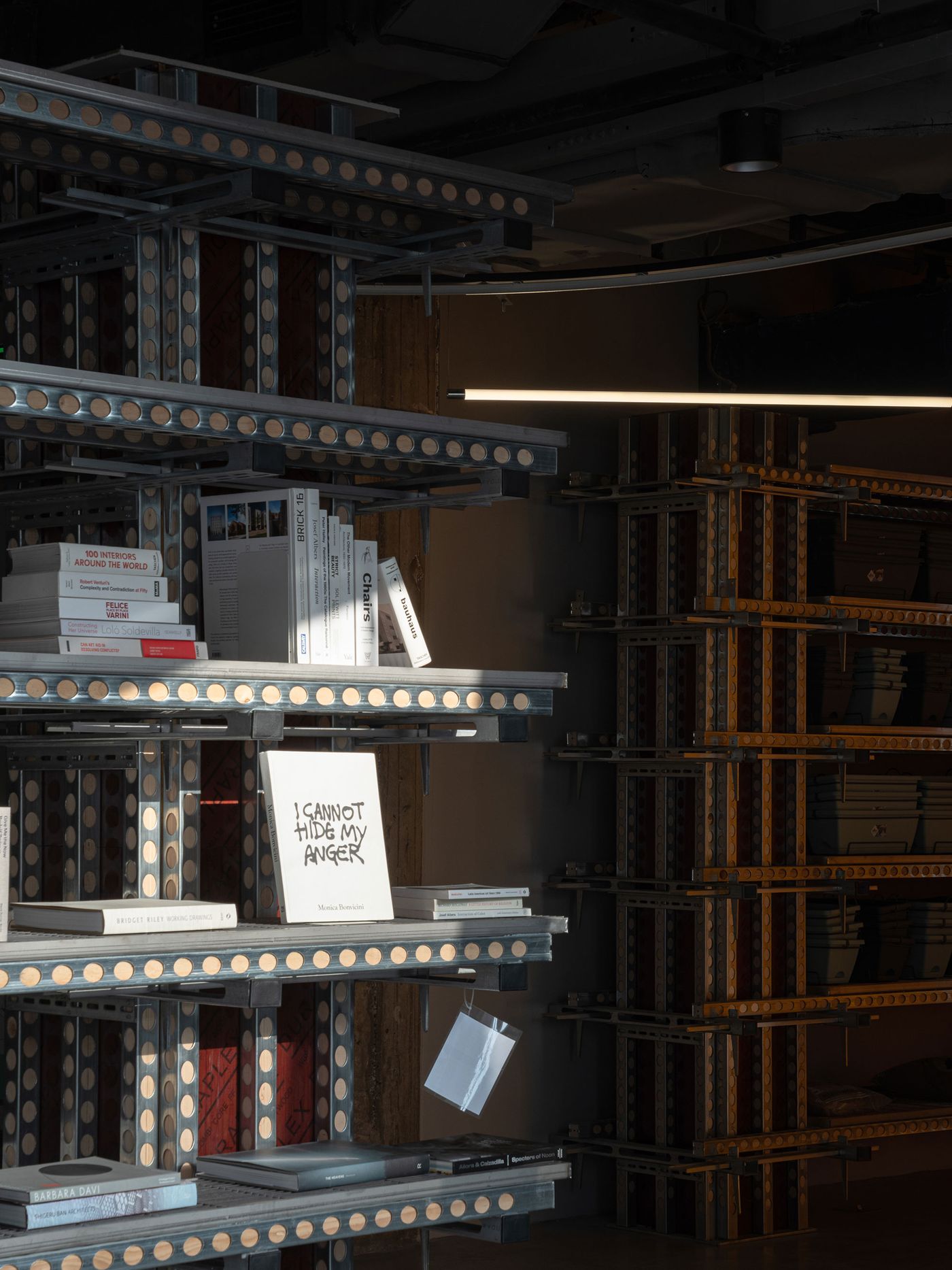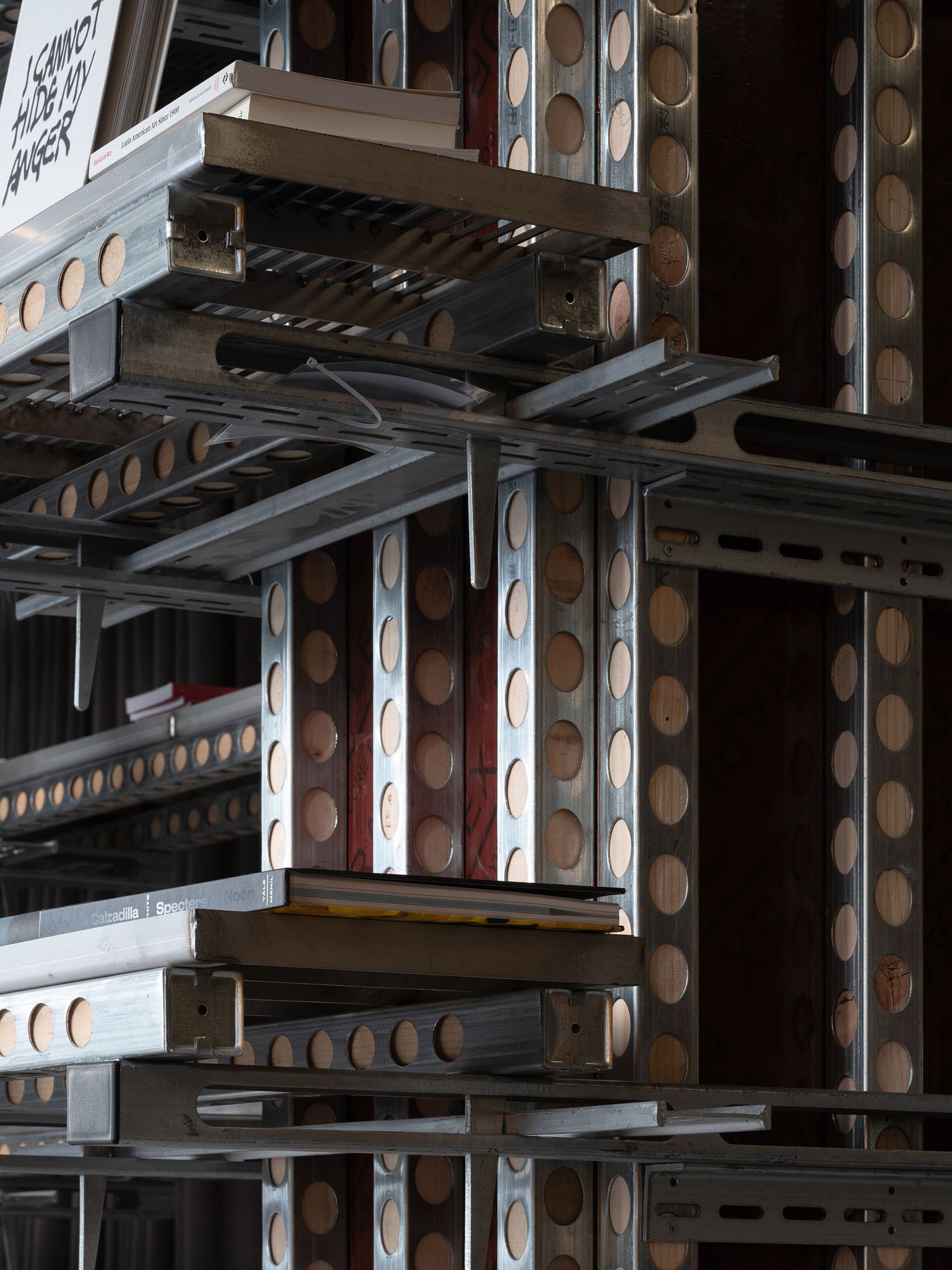889GLO Art Space by SpActrum Challenges the Architecture of Consumerism in Shanghai
Words by Eric David
Location
Shanghai, China
889GLO Art Space by SpActrum Challenges the Architecture of Consumerism in Shanghai
Words by Eric David
Shanghai, China
Shanghai, China
Location
Tucked inside a commercial plaza in Shanghai’s Jing’an District, 889GLO Art Space eschews both the minimalist white-box aesthetic and the sleek sophistication typical of corporate cultural venues, opting instead for a singular blend of industrial rawness and architectural bricolage. Conceived as a hybrid platform for artistic exchange and community engagement, the 930-square-metre venue by local studio SpActrum is a collage of salvaged materials where PVC fireproof strips serve as space dividers, forklift pallets and metal drums are reimagined as table supports, and ventilation grilles become lighting fixtures. Part architectural experiment, part social provocation, the project continues SpActrum’s long-standing inquiry into “unseen forces of construction,” probing the invisible scaffolding, be it economic, material, or ecological that underpins urban consumption in China.
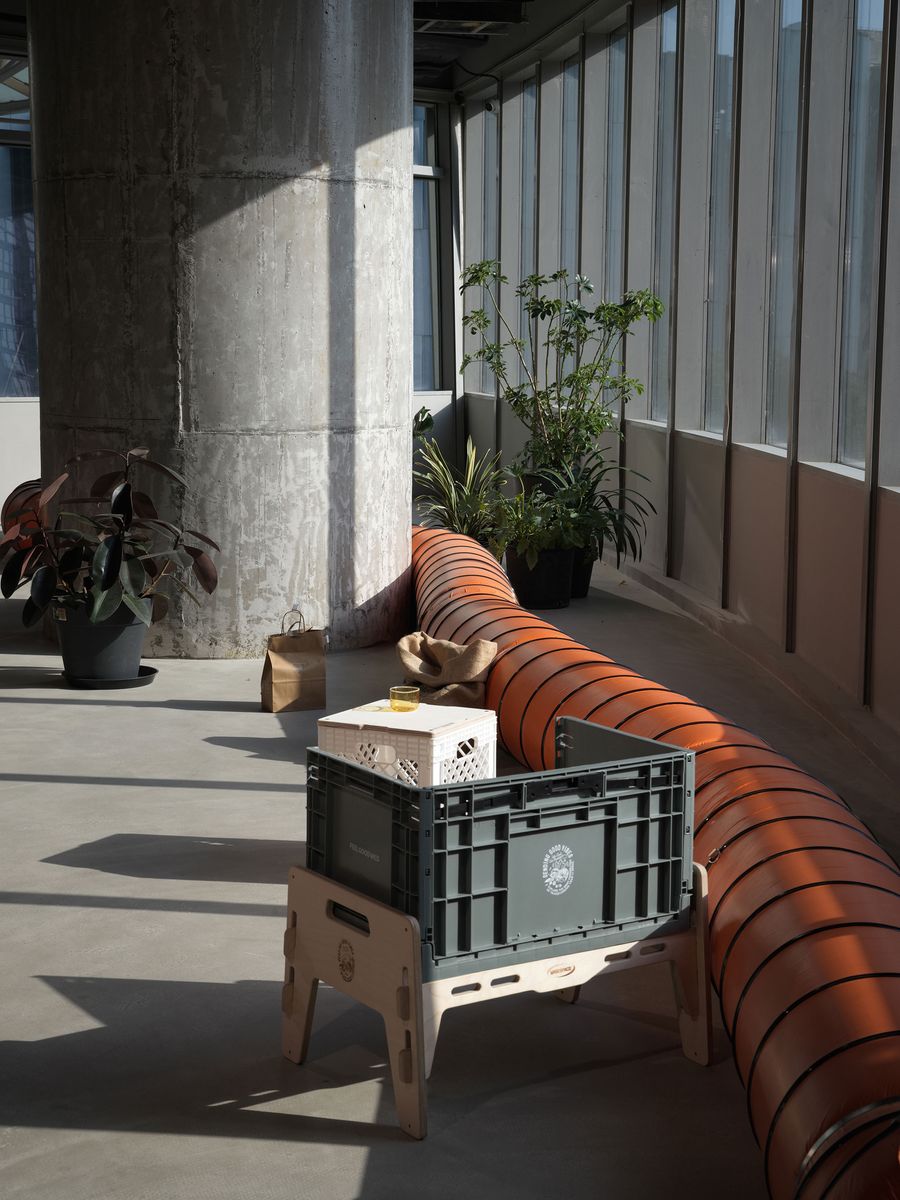
Photography by SpActrum.
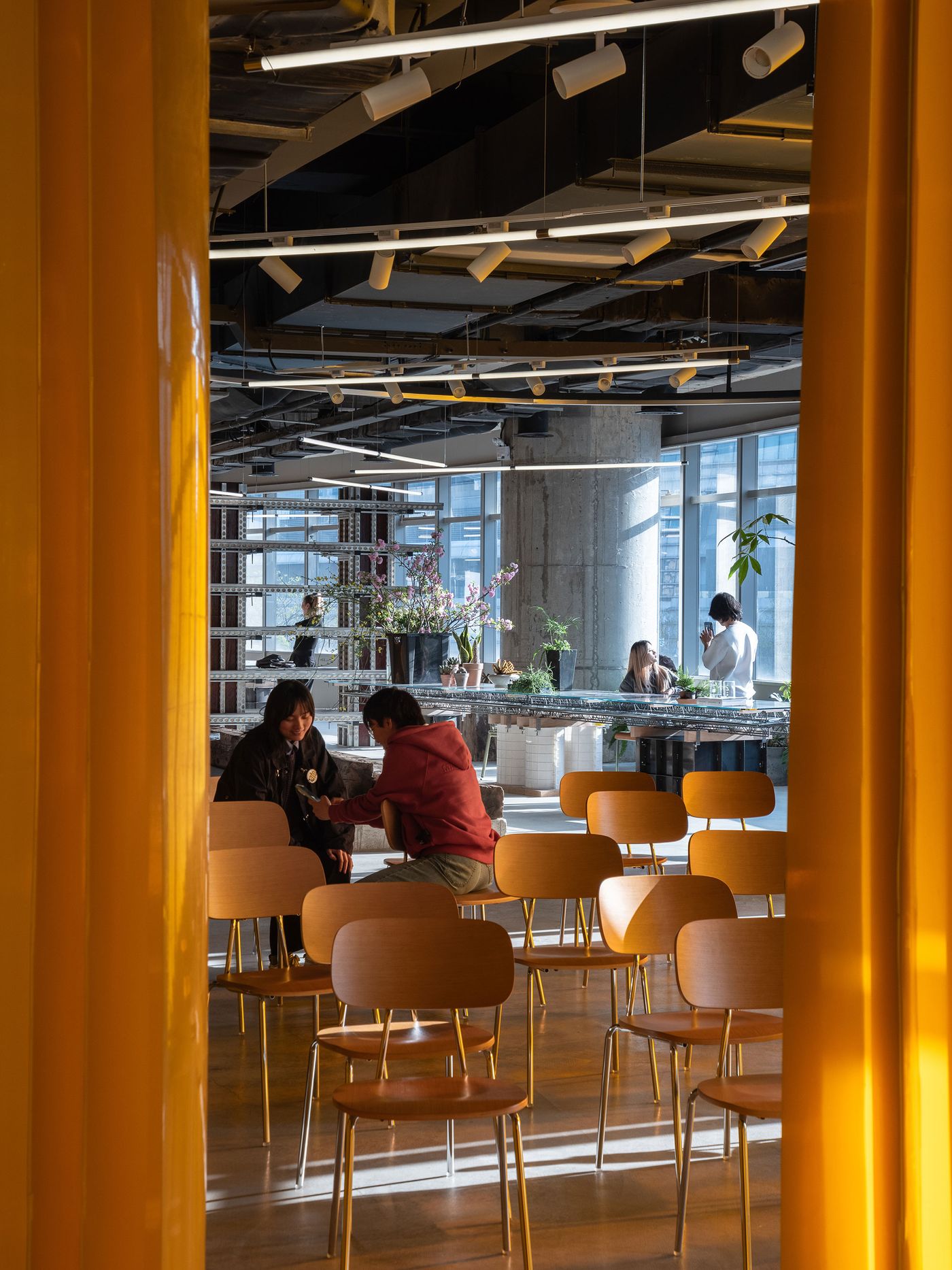
Photography by SFAP.
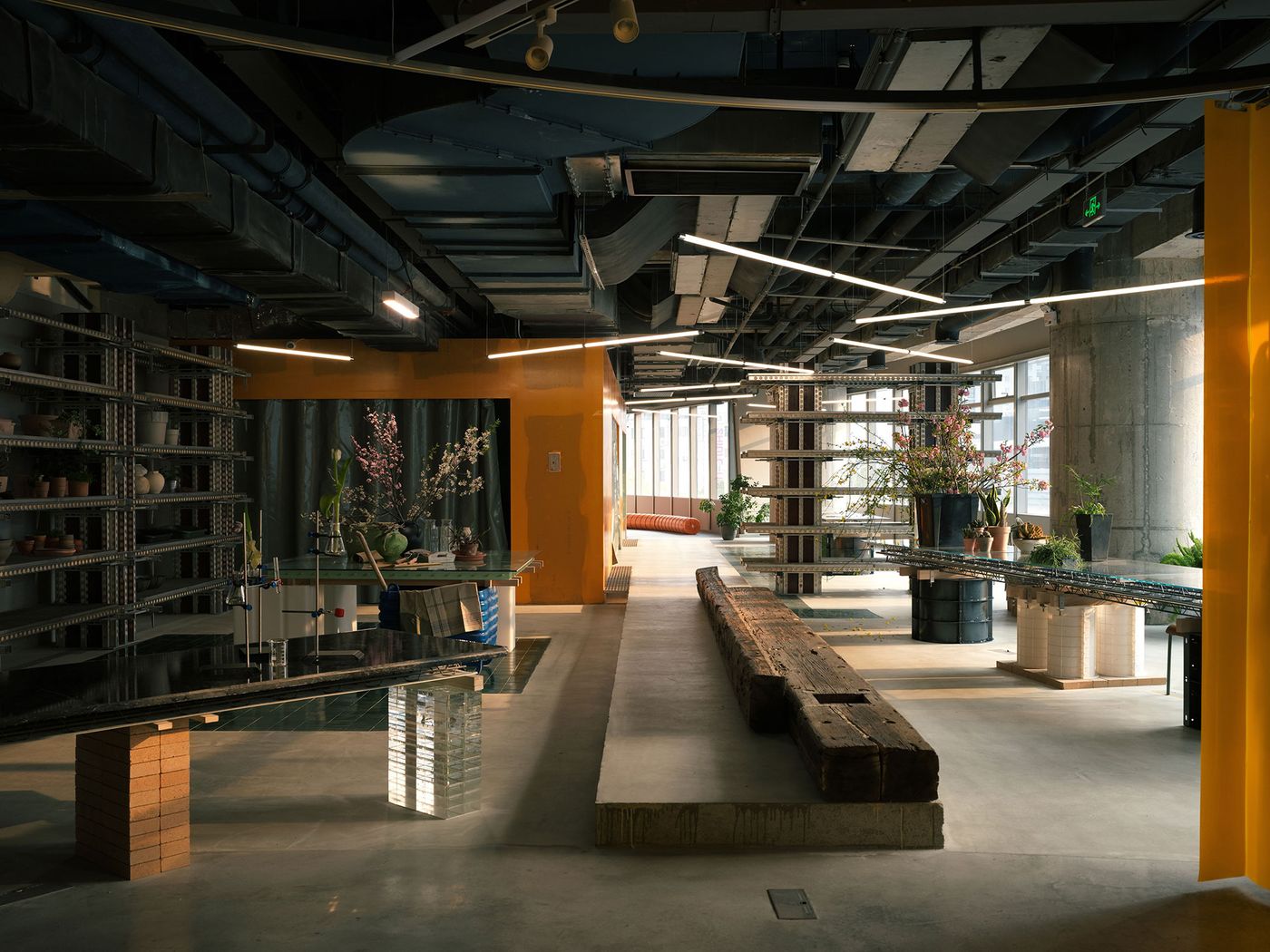
Photography by SpActrum.
The design draws conceptual impetus from staggering resource statistics: billions of tonnes of coal, steel, and cement consumed annually, alongside data on fuel, water, and transport infrastructure. These numbers, the studio suggests, shape not just economies, but lives and yet remain largely invisible. At 889GLO, SpActrum’s response is making these infrastructures more tangible through an inventory of repurposed industrial components, crafting what they call a “landscape of consumption.”
This logic of assemblage extends to the spatial layout, which favours porosity over enclosure. Walls have been stripped away to reveal panoramic views of the city, while traces of former tenants evidenced in paint residues and patched ceilings are preserved like archaeological strata. A sinuous circulation route now guides visitors through a sequence of hybrid spaces, starting with a light-filled café populated by boxy chairs and tables made from repurposed plastic storage crates. A flame-retardant, orange-hued ventilation duct that now serves as a meandering bench and a blue-painted cooling tower panel refashioned into a pendant light add a sculptural presence, while clusters of potted plants are used to great effect to soften the industrial edges.
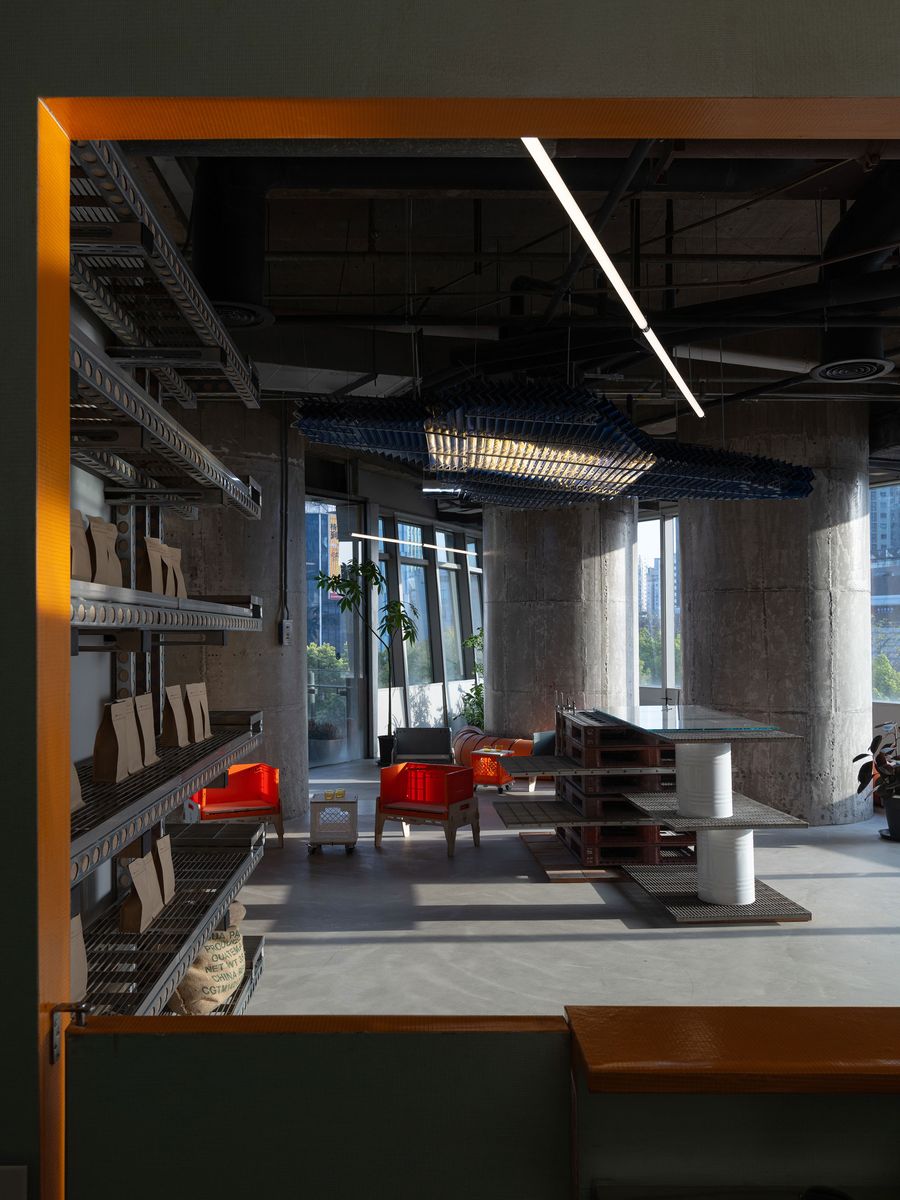
Photography by SFAP.
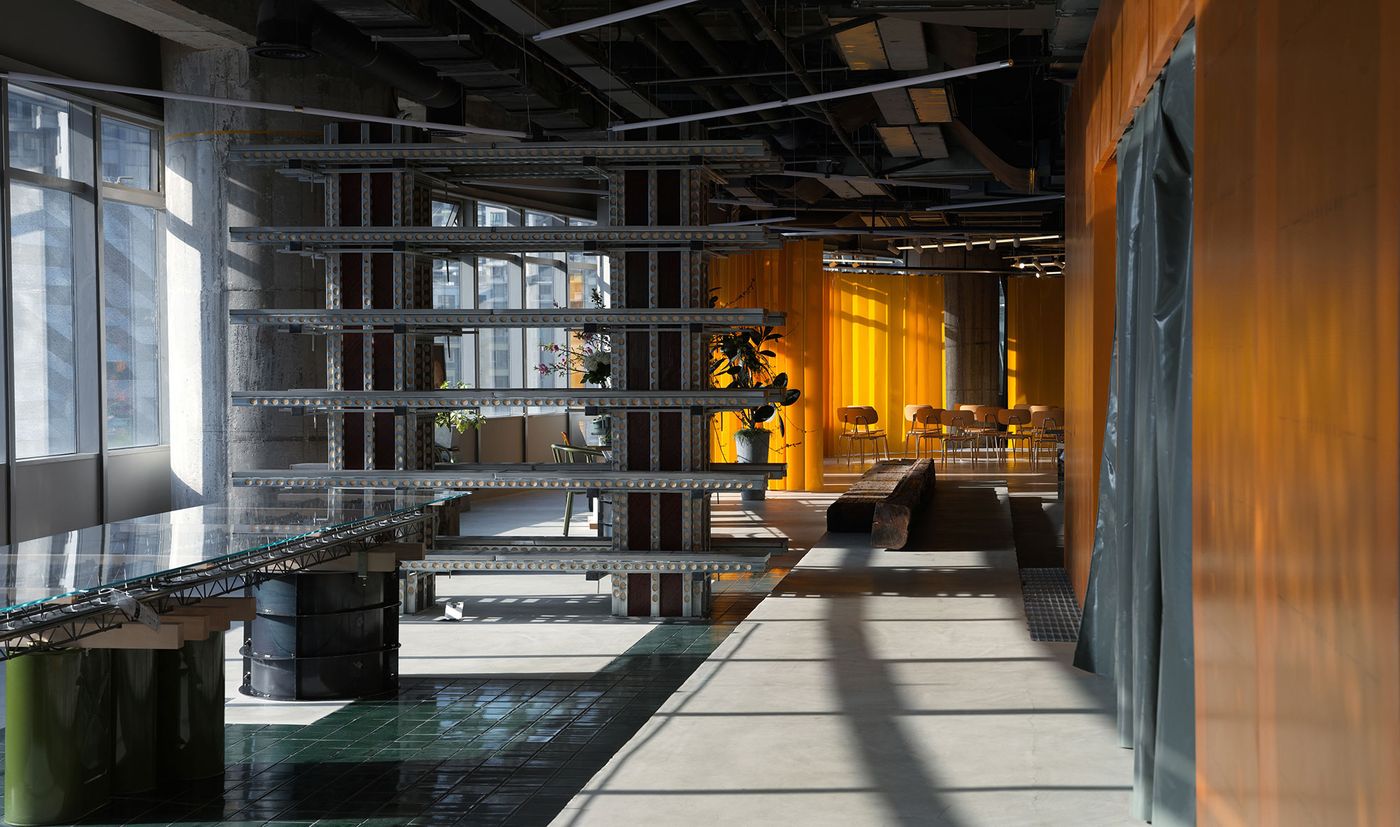
Photography by SpActrum.
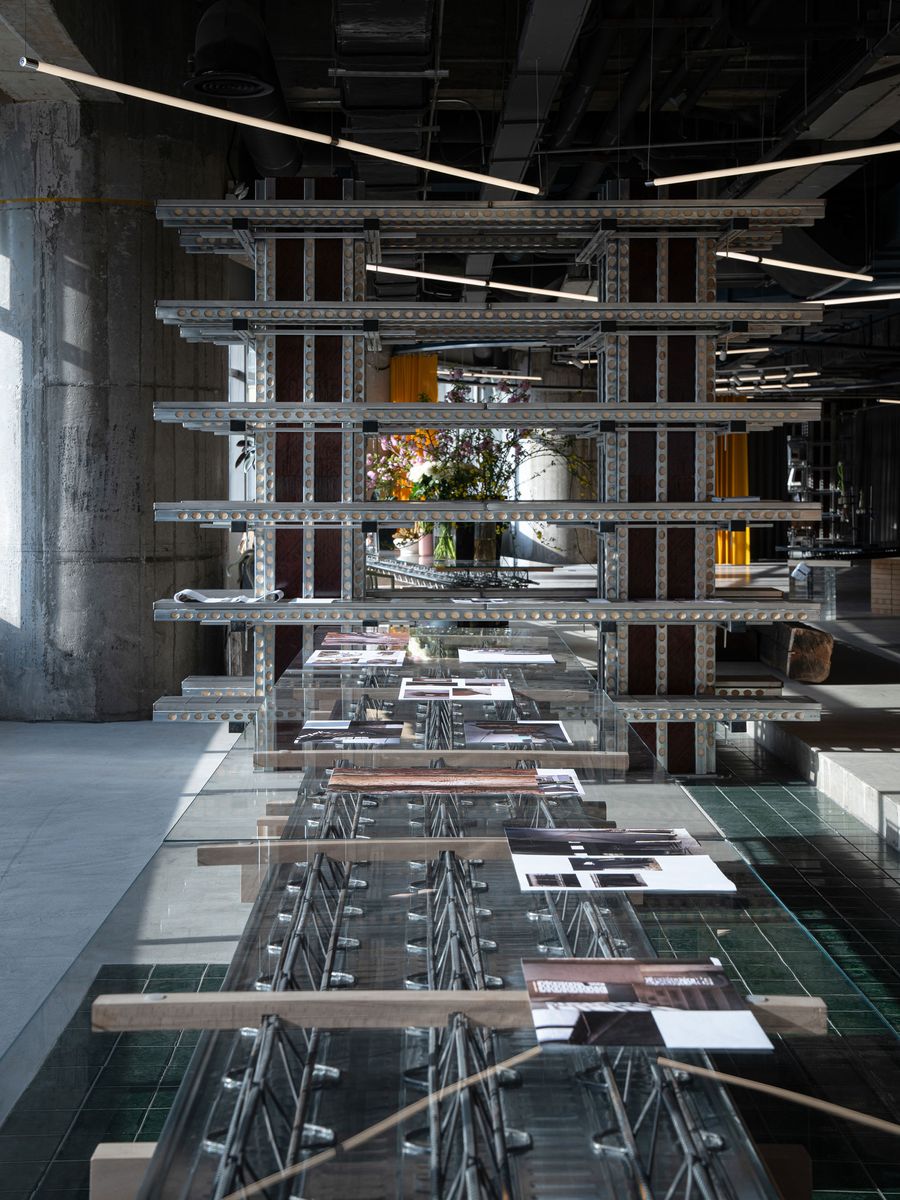
Photography by SFAP.
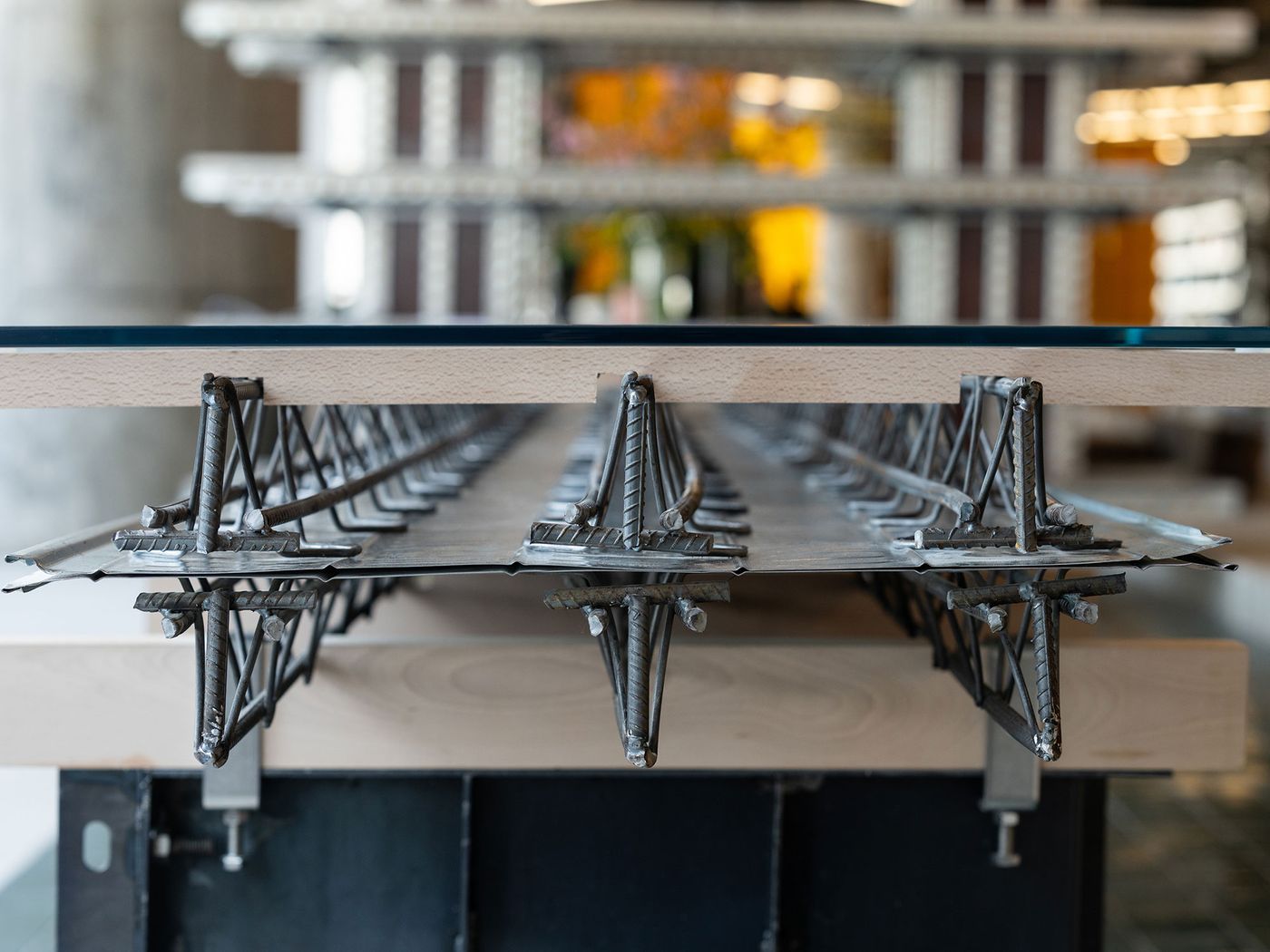
Photography by SFAP.
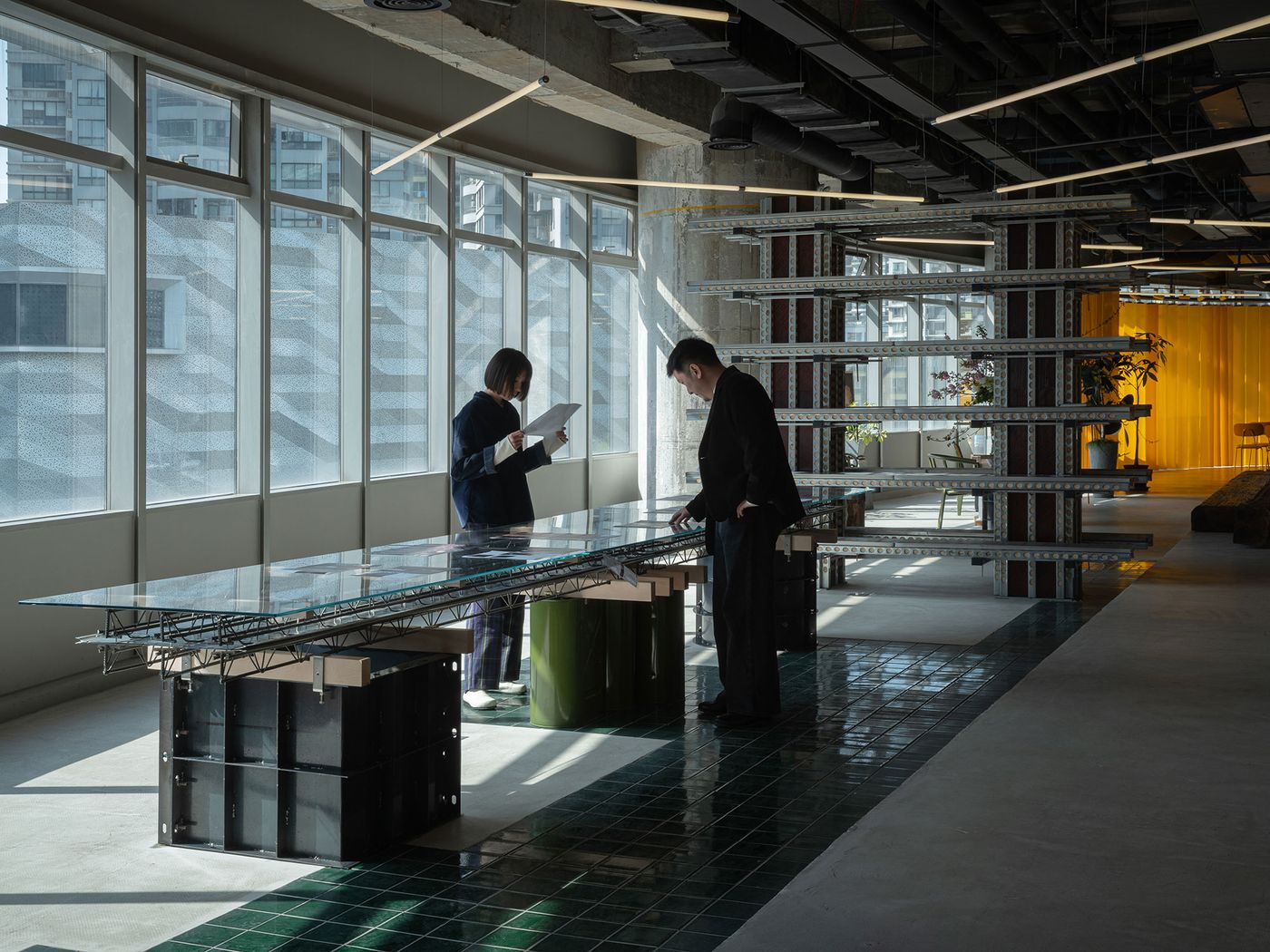
Photography by SFAP.
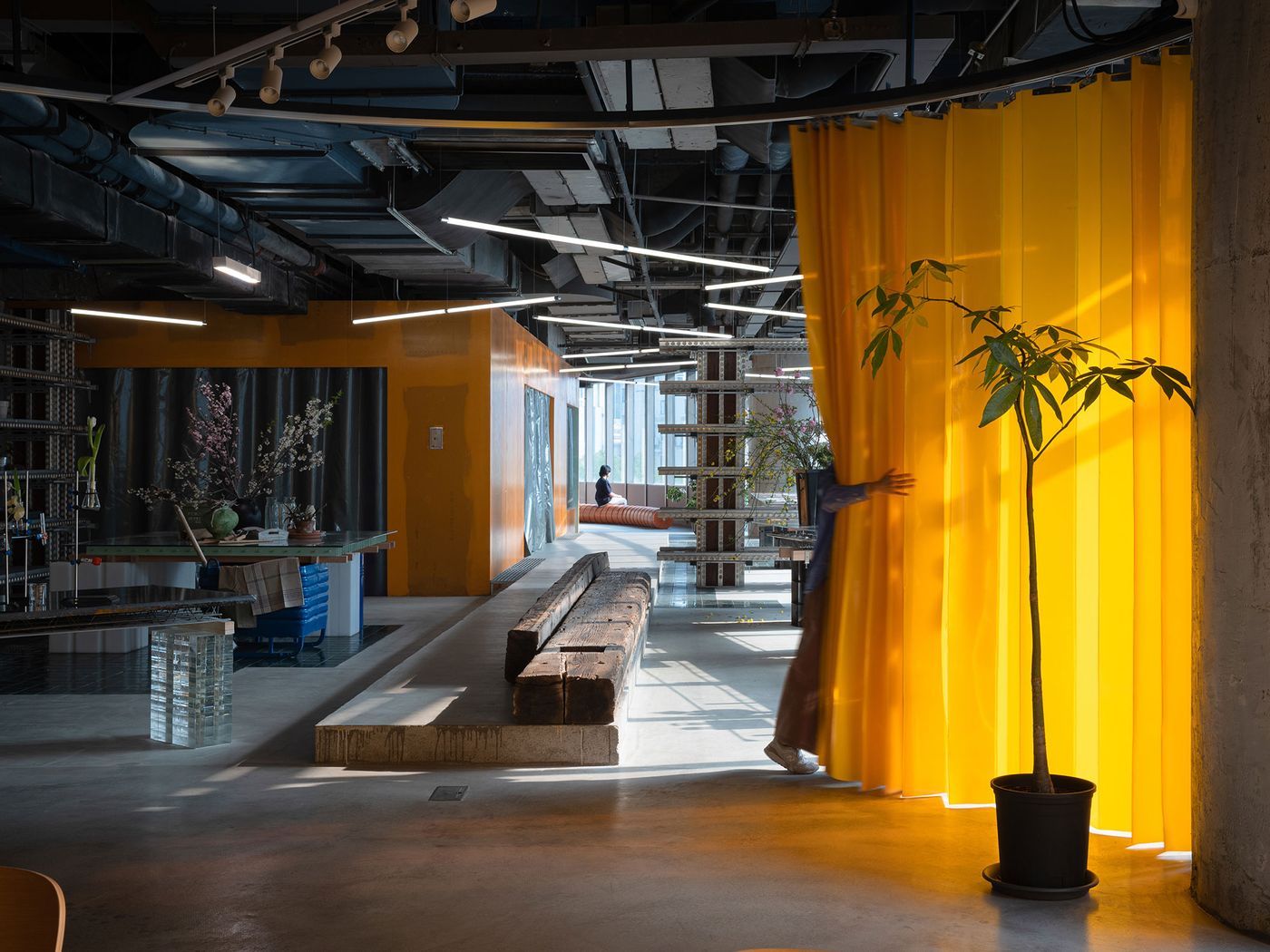
Photography by SFAP.
The café gives way to gallery zones and a florist studio featuring long tables constructed from heavy-duty forklift pallets, metal drums, and plastic containers, among other cast-offs. A 6.8-metre bench crafted from reclaimed ship timber lends a touch of tactile warmth to the otherwise utilitarian palette, while space-dividing curtains inject vibrant yellow and orange tones into the otherwise monochrome setting. Made from truck tarps and fireproof PVC membranes, the curtains delineate an oval-shaped area that can be used for conferences and lectures.
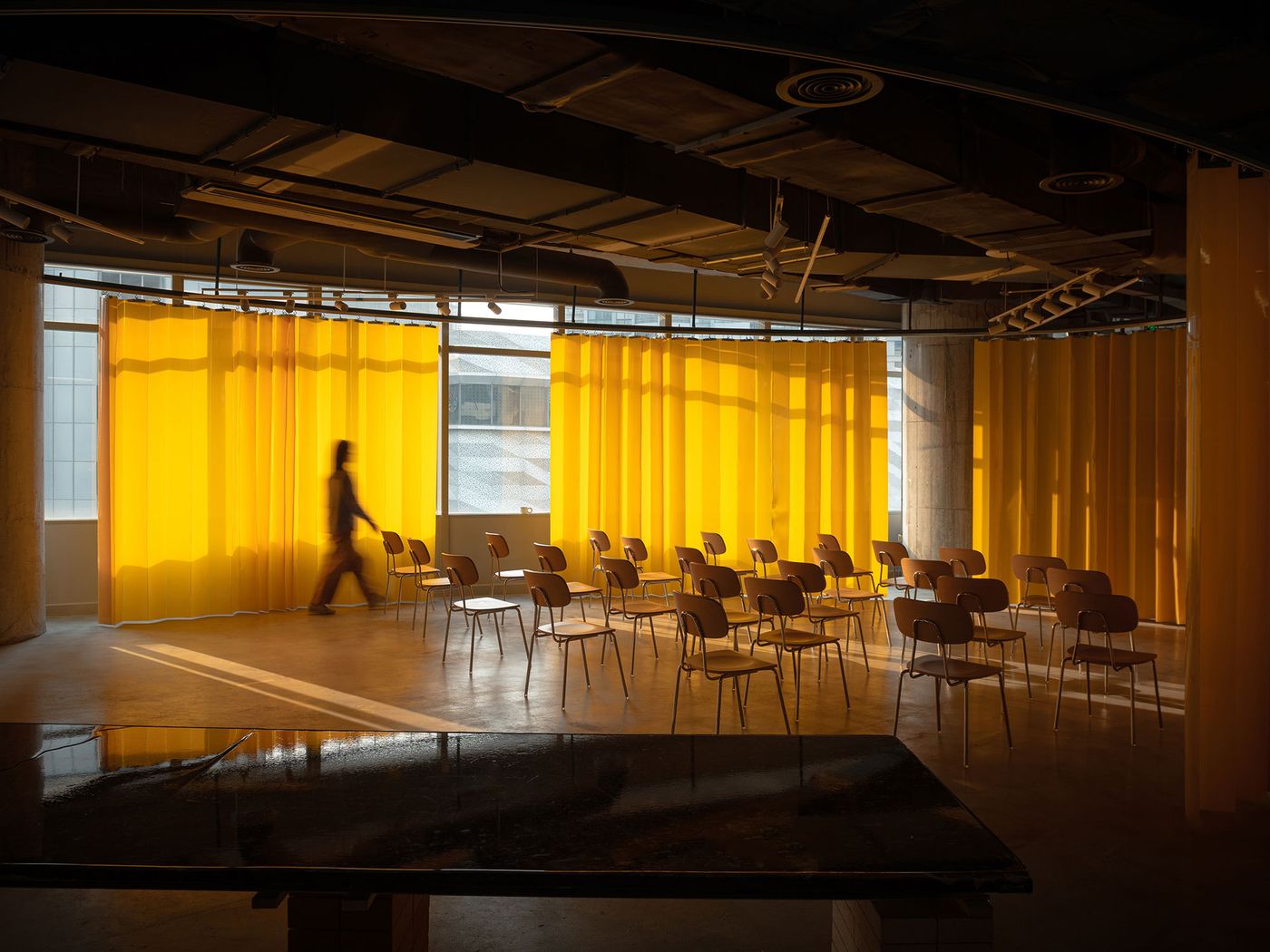
Photography by SFAP.
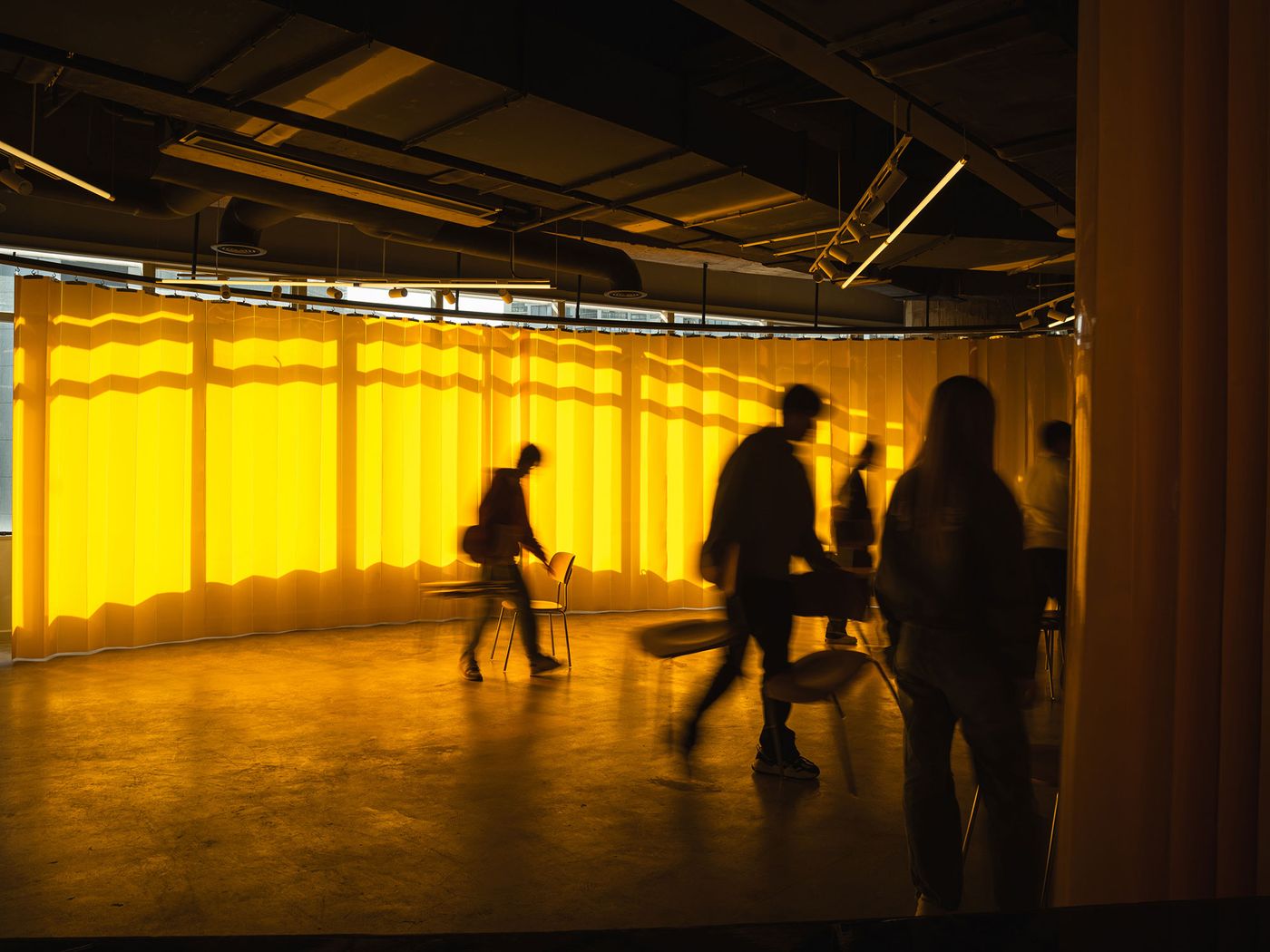
Photography by SFAP.
The spatial journey culminates in a spacious library framed by a semicircular glass façade on one side and towering bookshelves on the other. Found throughout the premises, these modular bookshelves are constructed using metal grates, timber slats, and other components typically used for concrete formwork. The overall effect of the use of these materials is one of ingenious transformation that is raw, resourceful, and strikingly coherent.
Rather than directing an experience, SpActrum cultivates a certain ambiguity where furniture resists typology, zones bleed into one another, and materials retain traces of their past lives. The designers describes this as a “deliberate ambiguity” between form and function, a strategy that sidesteps commercial design’s drive for legibility and efficiency in favour of interpretive multiplicity. While 889GLO doesn’t claim to resolve the contradictions of contemporary consumption, it does reframe them. In doing so, it invites a new kind of engagement, one that is both playful and critically aware.
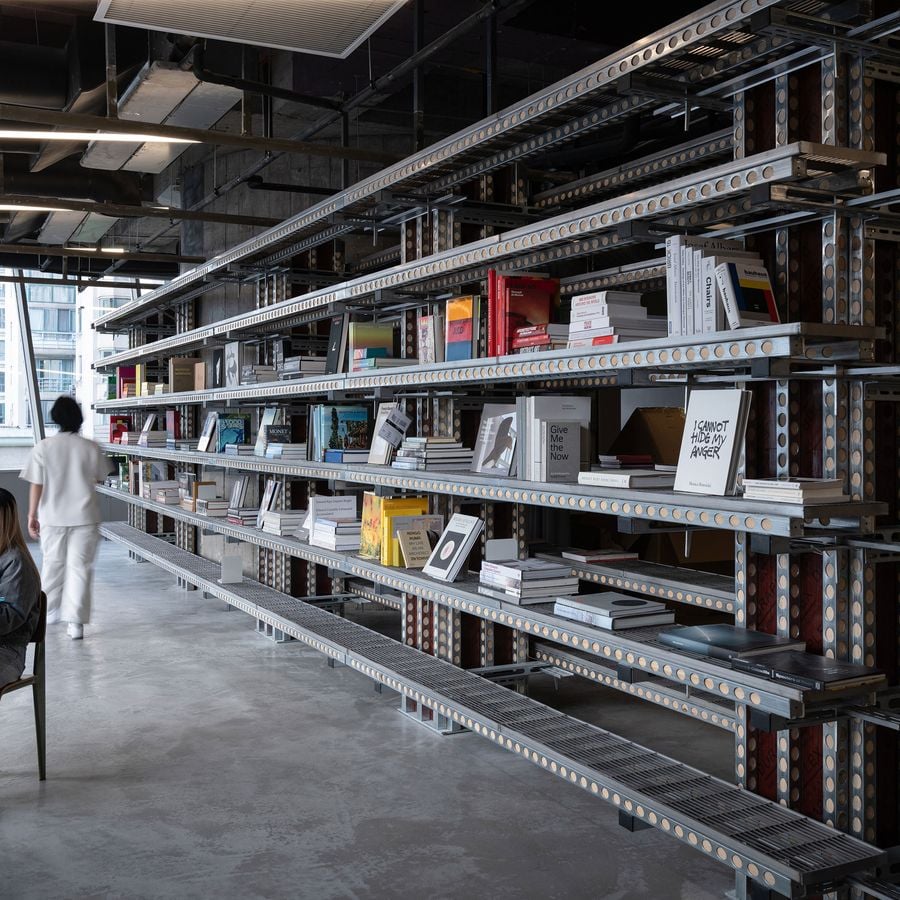
Photography by SFAP.
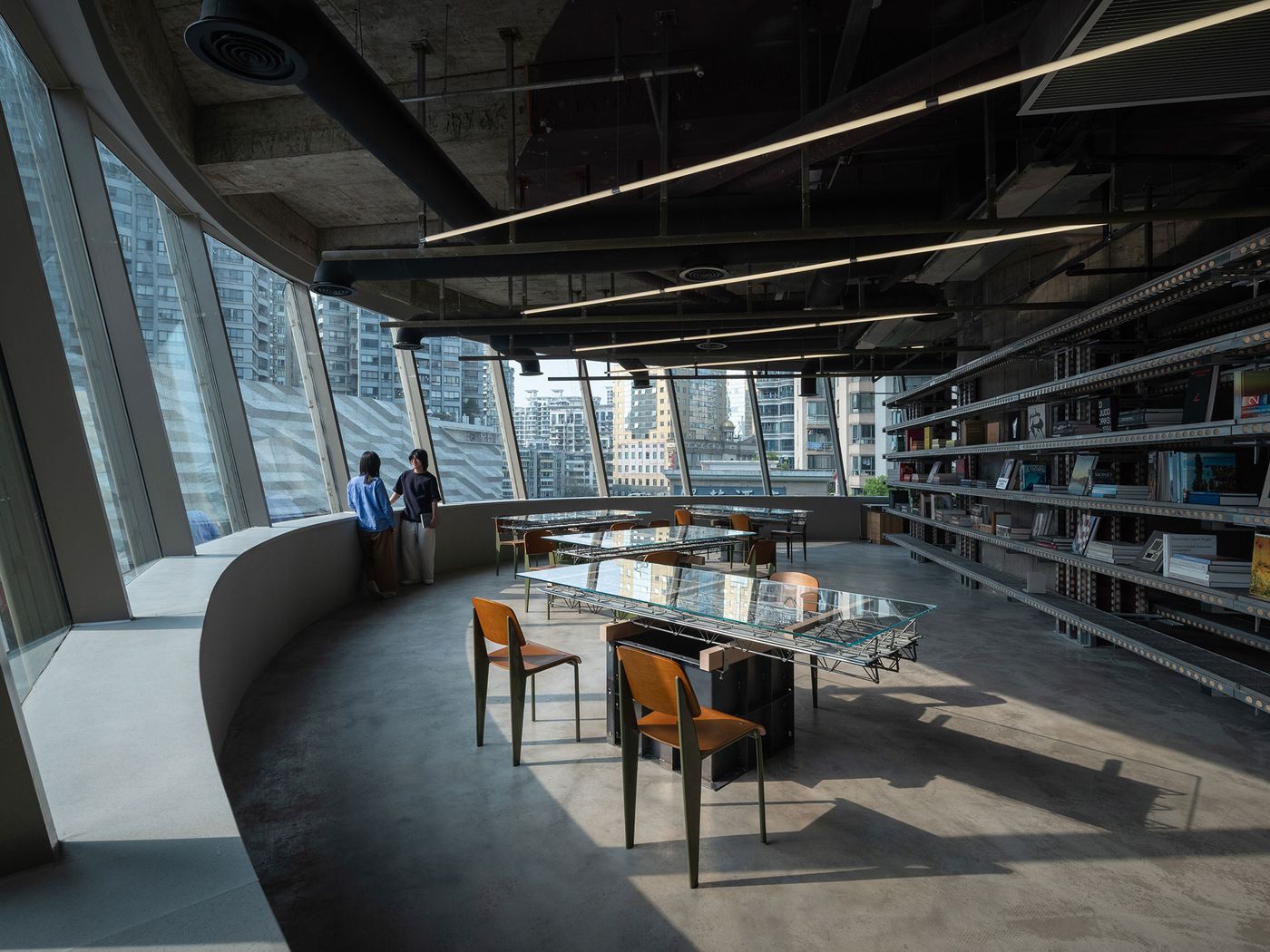
Photography by SFAP.
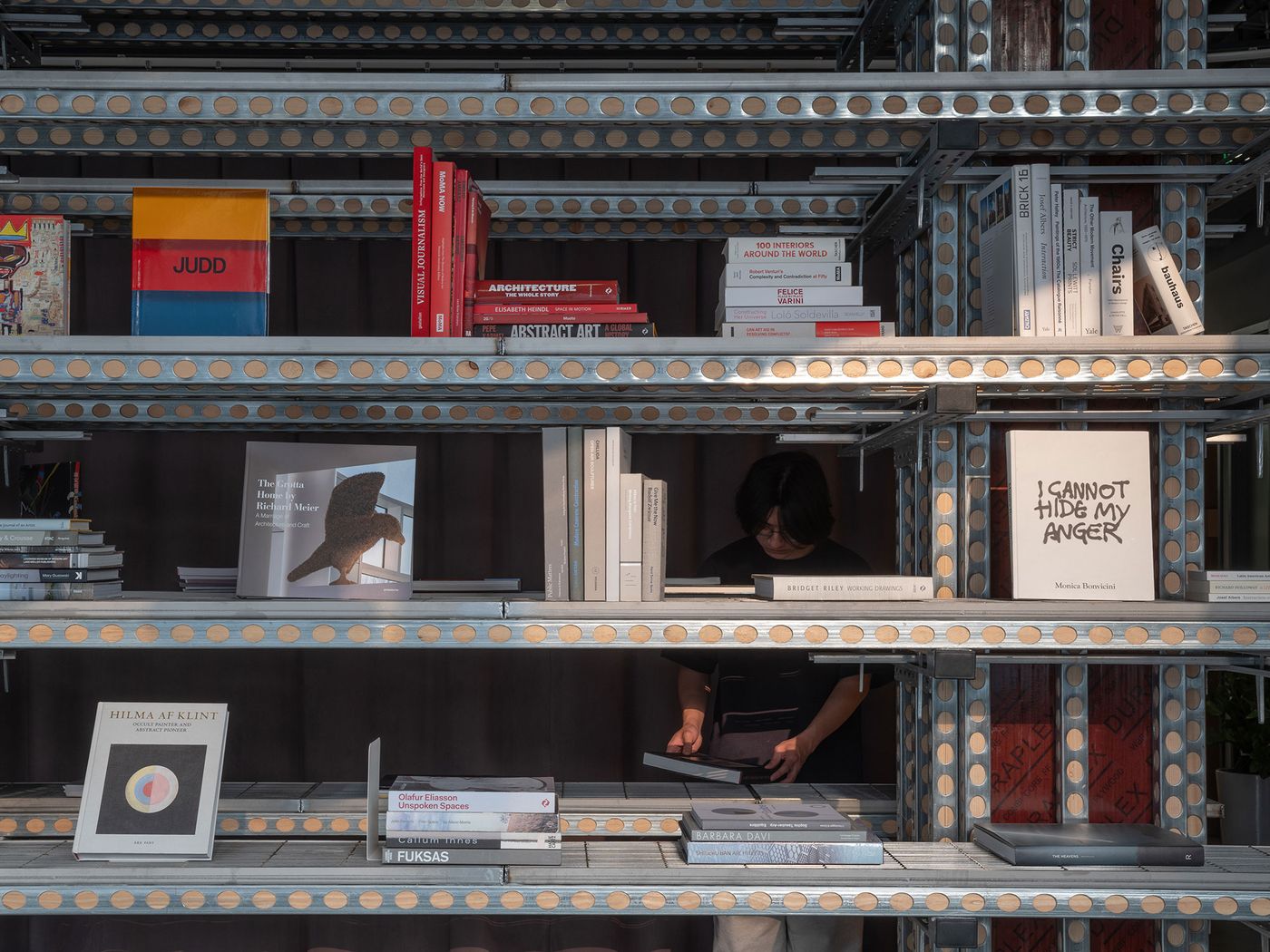
Photography by SFAP.
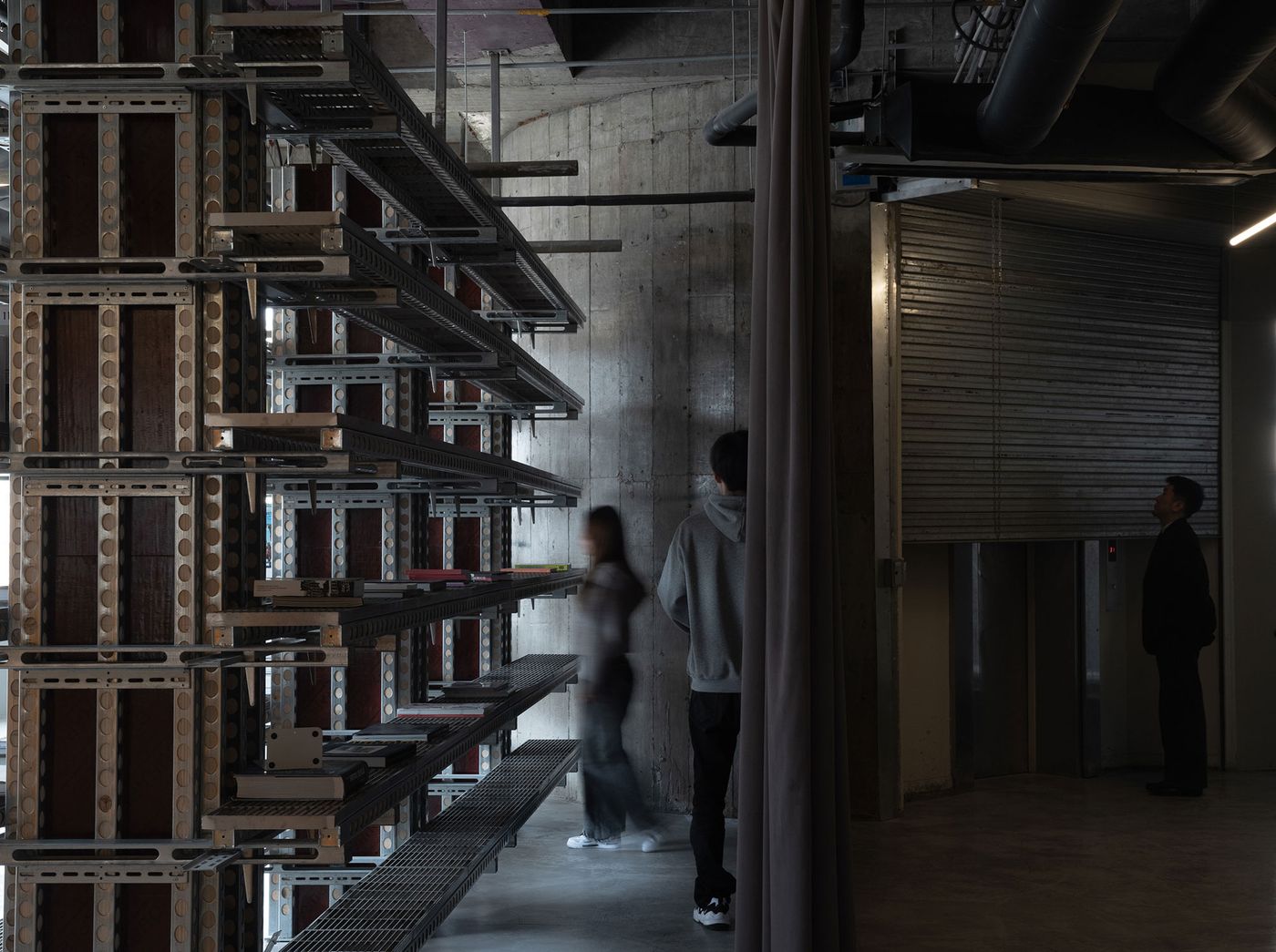
Photography by SFAP.

Photography by SFAP.
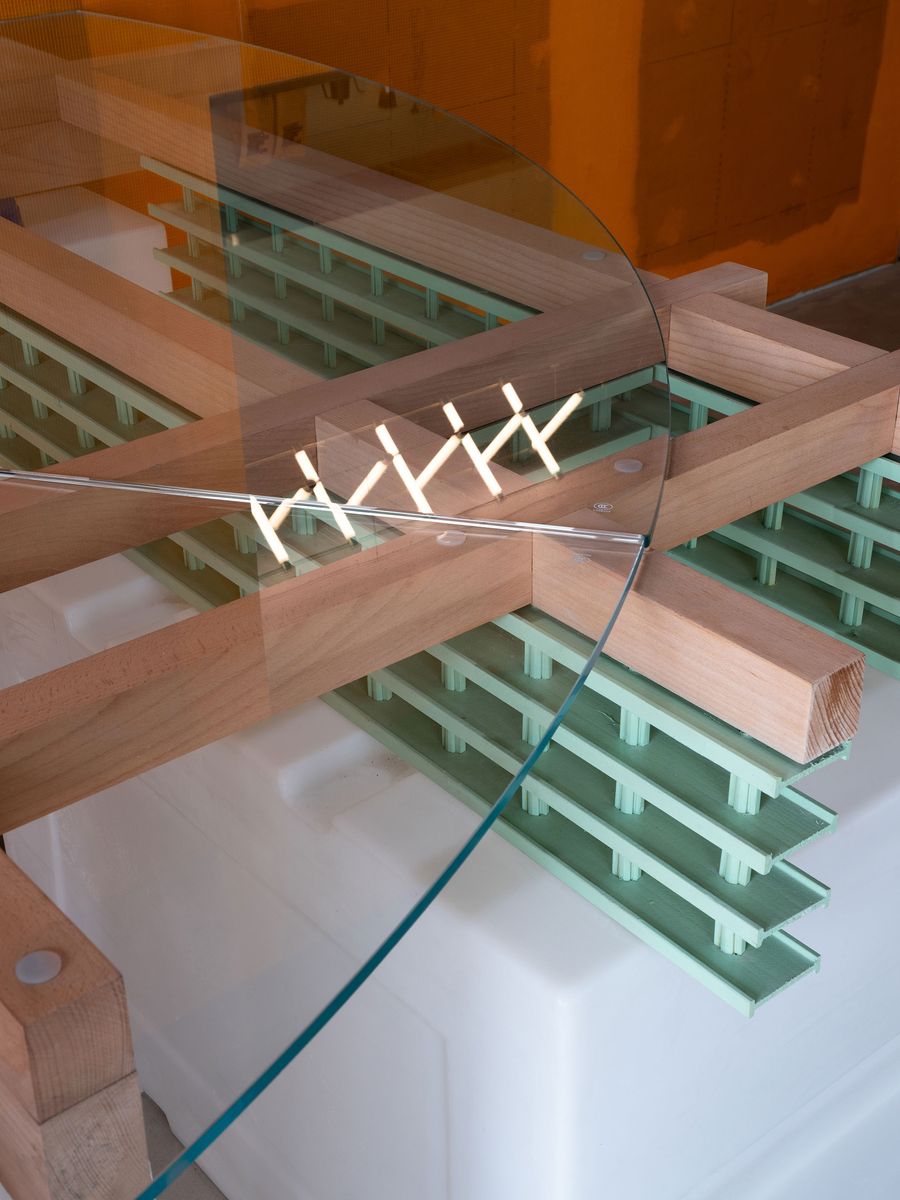
Photography by SFAP.
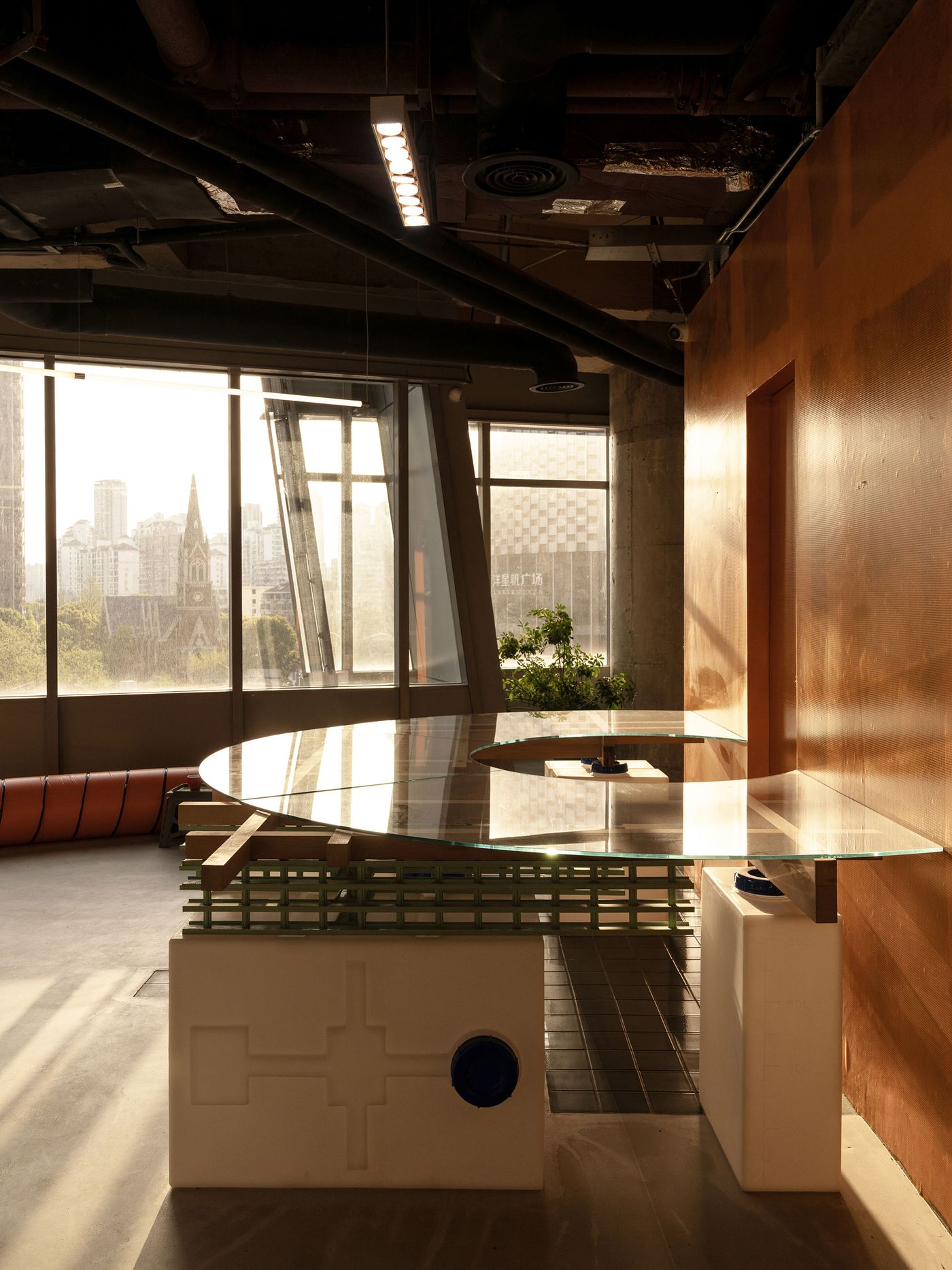
Photography by SFAP.
